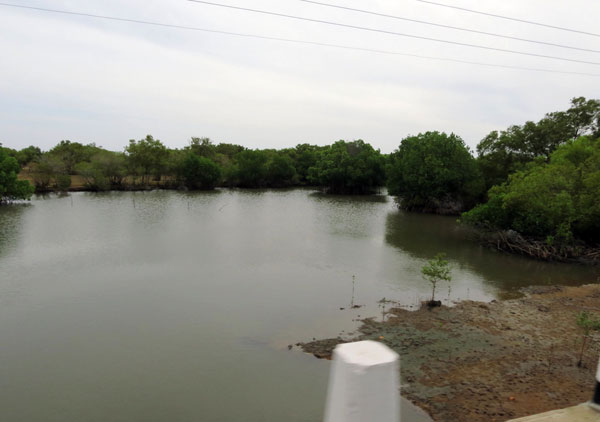Reply To:
Name - Reply Comment
Last Updated : 2024-04-17 15:19:00
.jpg)
.jpg) By Lakna Paranamanna
By Lakna Paranamanna.jpg) Under the amendments made to the National Environmental Act (NEA) in 1988 through National Environmental (Amendment) Act No. 56 of 1988, the approval of projects stipulates the submission of the Initial Environmental Examination (IEE) report and Environmental Impact Assessment (EIA) report, which should receive the concurrent approval of the Central Environmental Authority (CEA) and of the relevant Project Approving Agency. Hence, the EIA of the proposed Yan Oya reservoir too was submitted by the Mahaweli Authority in May this year for approval.
Under the amendments made to the National Environmental Act (NEA) in 1988 through National Environmental (Amendment) Act No. 56 of 1988, the approval of projects stipulates the submission of the Initial Environmental Examination (IEE) report and Environmental Impact Assessment (EIA) report, which should receive the concurrent approval of the Central Environmental Authority (CEA) and of the relevant Project Approving Agency. Hence, the EIA of the proposed Yan Oya reservoir too was submitted by the Mahaweli Authority in May this year for approval.
.jpg) Human-elephant conflict to worsen?
Human-elephant conflict to worsen? 
Add comment
Comments will be edited (grammar, spelling and slang) and authorized at the discretion of Daily Mirror online. The website also has the right not to publish selected comments.
Reply To:
Name - Reply Comment
On March 26, a couple arriving from Thailand was arrested with 88 live animal
According to villagers from Naula-Moragolla out of 105 families 80 can afford
Is the situation in Sri Lanka so grim that locals harbour hope that they coul
A recent post on social media revealed that three purple-faced langurs near t

10 Apr 2024
09 Apr 2024